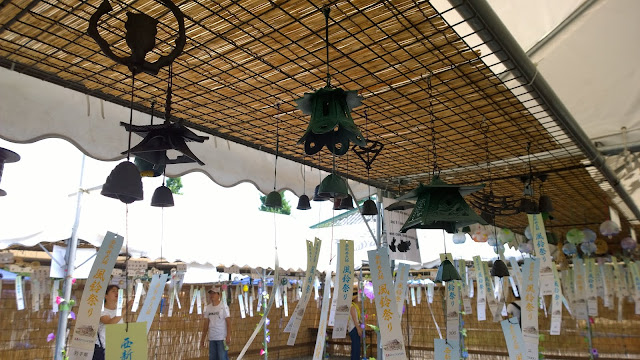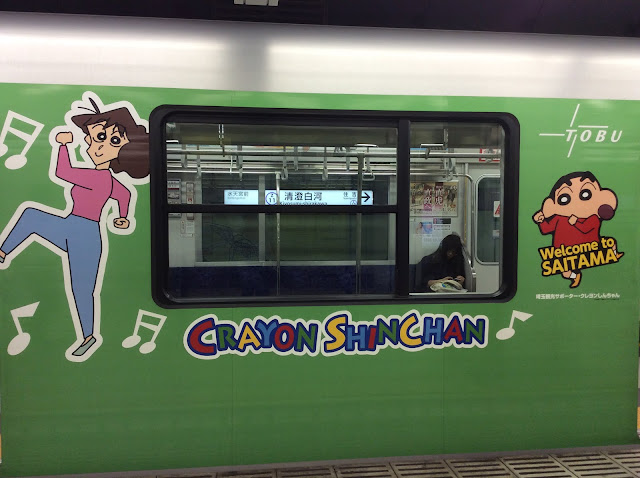Dahil Agosto ay buwan ng wika, susubukan kong gawin (at tapusin) ang sanaysay na ito sa
wikang Filipino.
wikang Filipino.
Akmang-akma naman kasi ang aking salaysay ay tungkol sa isang lokal na pagkaing tumubo
mula sa panlasa ng mga taga-Naga sa rehiyon ng Bicol.
Maaaring alam ninyo ang mga lutong Bicol tulad ng laing, bicol express, pinangat at iba pa
ngunit ilan sa inyo ang nakaka-alam sa pagkaing kinalas?
Tulad ng marami sa inyo, hindi ko kilala ang kinalas kahit ilang beses na akong nakadalaw sa Naga.
Naririnig kong binabanggit ito ng aking anak na si Gani (na nag aral sa Naga) pag siya ay nananabik makatikim uli ng kinalas kaya nga lang ay walang nagtitinda nito sa Maynila.
Kamakailan (salamat sa isang proyektong aking ginagawa) mapalad akong nakabisita muli sa Naga at kahit kulang sa labindalawang oras lang ang tinigil namin dito, sinigurado kong makakakain ako ng kinalas -- matikman nga kung talagang masarap ito!
Kung pagkaing lokal ang hanap, kailangan ipagtanong ito sa mga lokal din.
Sumakay kami sa traysikel at sinabing dalhin kami sa pinakamasarap na kainan ng kinalas sa buong Naga.
Walang pag-aatubiling dinala niya kami sa Barangay Dayangdayang kung saan daw mahahanap ang mga paboritong kinalasan ng mga taga-Naga.
Lumiko kami sa Kalye Corregidor at totoo nga ... maraming kinalasan na makikita doon.
Para na po, bababa na po kami!
mula sa panlasa ng mga taga-Naga sa rehiyon ng Bicol.
Maaaring alam ninyo ang mga lutong Bicol tulad ng laing, bicol express, pinangat at iba pa
ngunit ilan sa inyo ang nakaka-alam sa pagkaing kinalas?
Tulad ng marami sa inyo, hindi ko kilala ang kinalas kahit ilang beses na akong nakadalaw sa Naga.
Naririnig kong binabanggit ito ng aking anak na si Gani (na nag aral sa Naga) pag siya ay nananabik makatikim uli ng kinalas kaya nga lang ay walang nagtitinda nito sa Maynila.
Kung pagkaing lokal ang hanap, kailangan ipagtanong ito sa mga lokal din.
Sumakay kami sa traysikel at sinabing dalhin kami sa pinakamasarap na kainan ng kinalas sa buong Naga.
Walang pag-aatubiling dinala niya kami sa Barangay Dayangdayang kung saan daw mahahanap ang mga paboritong kinalasan ng mga taga-Naga.
Lumiko kami sa Kalye Corregidor at totoo nga ... maraming kinalasan na makikita doon.
Para na po, bababa na po kami!
Nguni't di kami huminto ... hindi pala Nonoy's ang suki ni Mamang Traysikel kundi ito --
Cordova's Kinalas na nasa dulo na ng Kalye Corregidor.
Ayon sa kaniya ito daw ang pinaka masarap na kinalas sa buong Naga. Totoo nga kaya, pero bakit
parang walang katao-tao nung kami'y dumating?
Sumilip kami sa loob at nagtanong. Bukas naman daw sila at kakaalis lang ng mga nananghalian. Dalawa lang ang putahe na maaari mong makain sa Cordova's -- kinalas at loglog. Nagulat ako at napaka-mura ng halaga ng mga ito.
Abot kaya palang kumain ng kinalas, kahit araw-arawin mo pa!
Abot kaya palang kumain ng kinalas, kahit araw-arawin mo pa!
Ano ba ang sangkap ng kinalas at paano itong niluluto?
Sariwang miki ang gamit sa kinalas. Isang dakot ang nilalagay sa bawat mangkok.
Sasamahan ito ng tinadtad na murang sibuyas at isang buong nilagang itlog.
Para bang mami lang ba ang dating?
Sasamahan ito ng tinadtad na murang sibuyas at isang buong nilagang itlog.
Para bang mami lang ba ang dating?
Higit pa sa mami ang kinalas -- at ito ang dahilan.
May mala-palabok na sarsa, bagama't magkaiba sila ng kulay, na siyang nagbibigay ng katangi-tanging panlasa at sarap sa kinalas.
May mala-palabok na sarsa, bagama't magkaiba sila ng kulay, na siyang nagbibigay ng katangi-tanging panlasa at sarap sa kinalas.
Sabi ng kusinera sa Cordova's na sabaw ng hipon at dinurog na hibe ang dalawang sangkap ng
sarsa ... at ano pa ang iba? Hmmm, sikret na 'daw yon!
Tatlo kami kaya tig-iisa kami ng kinalas jumbo. Dahil lampas ala-una na ng hapon, naririnig ko na ang malakas na kulog na galing sa aking sikmura. Bilisan na 'yan! Gutom na kami!
Huwag kang maingay, tiyan! Baka buhusan kita ng kumukulong sabaw!
Ano ang sinabi ng ramen tonkotsu o shio ng mga Hapon sa sabaw ng kinalas, aber?
Wala!
Tulad din ng ramen, ang sabaw ang pinaka-mahalaga sa kinalas.
Sa Cordova's, walang tigil at maghapong pinapakuluan ang sabaw na gawa sa buto mula sa ulo
at iba pang bahagi ng baka.
at iba pang bahagi ng baka.
Di mahal ang ulo ng baka subalit siksik ito sa malinamnam na laman.
Dahil medyo mainit ang panahon (at kumukulong sabaw ang aming hihigupin) sa mesa sa labas
kami umupo. Kinalas al fresco!
May sili, suka, paminta at asin sa lamesa -- ito ang karaniwang dinadagdag sa kinalas.
Ang mga Bicolano ay kilalang mahilig sa maaanghang kaya sandamakmak na sili ang nasa
lalagyan.
Para sa akin, tamang tama ang lasa at sarap ng sabaw, di na kailangan dagdagan pa
ng asin o paminta.
Kaanya-anyaya ang itsura at nakakagutom ang amoy ng mainit na kinalas.
May tumpok ng hinimay na karne sa ibabaw -- ito ay galing sa ulo ng baka at iba pang
butong pinakuluan para sa sabaw.
Ang mga sari saring parte ng baka ay pinakuluan hanggang magkalas-kalas ang laman sa buto.
Iyan ang pinagmulan ng salitang "kinalas".
Ang mga sari saring parte ng baka ay pinakuluan hanggang magkalas-kalas ang laman sa buto.
Iyan ang pinagmulan ng salitang "kinalas".
Tinikman ko ang sabaw -- malinis at masarap, walang amoy o anggo na paminsan ay nauugnay
sa mga pagkaing gawa sa karne ng baka. Wala ding lumulutang na mantika o sebo.
Pag hinalo ang sabaw at sarsa, bahagyang lalapot ito. Malalasap mo din ang hipon na nagdaragdag ng lalim at lasa sa sabaw.
Kahit naubos na ang kinalas, walang sebo o taba na natira sa mangkok. Wala ding mala-sebong lasa na naiiiwan sa bibig.
Dahil matagal ang pagpapakulo, natunaw na siguro ang lahat ng taba at litid -- natira na lamang
ang nangingibabaw na umami at sarap.
Kung sapat na sa inyo ang sabaw at miki, subukan din ang loglog -- ang kapatid ng kinalas na
sibuyas, sarsa at itlog lamang ang lahok.
sibuyas, sarsa at itlog lamang ang lahok.
Nung kinuwento ko sa isang kaibigang taga-Naga na kumain ako ng kinalas, tinanong niya ako
kung ano ang tinerno ko dito.
"Baduya" ang sabi ko. "Para ka ng taga Naga" aniya.
"Baduya" ang sabi ko. "Para ka ng taga Naga" aniya.
Ang baduya ay piniritong saging, maruya sa ating mga taga Maynila.
Bago ko natikman, wari ko'y kakaiba -- ang maruya ay merienda, hindi pang terno sa mainit na sabaw. Pero bagay nga sila. Ito ang pares ng Naga -- kinalas at baduya!
Sarap na sarap kami sa aming unang pakikipag-tuos sa kinalas. Maraming salamat sa mga taga Cordova's sa kagandahang loob at init ng pagtanggap sa amin -- kasing init at sarap ng kanilang kinalas!
Hanggang sa muling paghigop! Dios mabalos, kinalas!



































